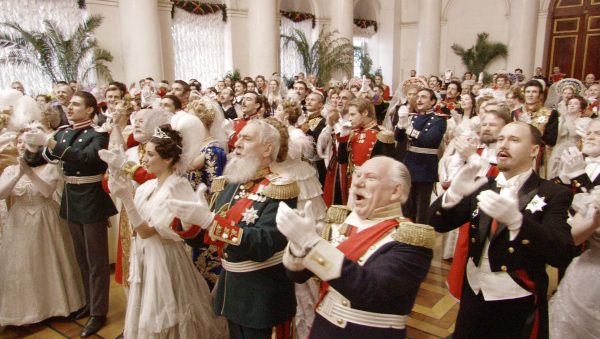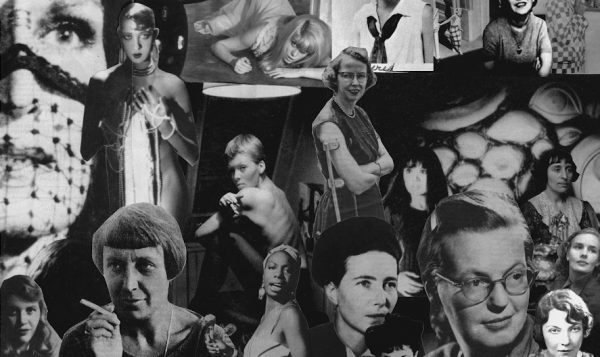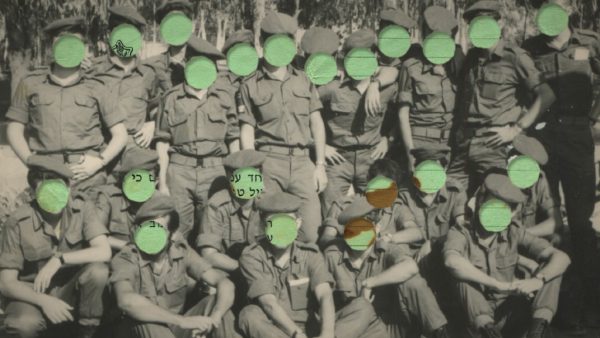Jessie Greengrass’s debut story collection caught my eye with its delightfully extravagant title, An Account of the Decline of the Great Auk, According to One Who Saw It, but its pleasures were more austere than baroque – and deservedly made it a multiple award-winner. The stories broadly divided into two types: those, like the title story, that played on antiquated scientific and historical narrative modes, and those that dug themselves deeper into a wholly subjective experience of the world. In these stories, nameless first-person narrators used compulsive self-analysis as much to distance themselves from feeling as to bring themselves closer to any kind of understanding of their lives. Greengrass continues both strands of her writing in this, her first novel; you feel that stories from her collection like ‘All the Other Jobs’ or ‘Dolphin’ could easily have evolved into a book such as this, or been sewn into the fabric of this one.
SIGHT sets its tone with the decidedly ambivalent opening line: ‘The start of another summer, the weather uncertain but no longer sharply edged, and I am pregnant again.’ What follows comes in three parts, each of which focuses on a significant event in the life of the unnamed narrator – a woman living in London with her partner, Johannes, and their young daughter, and, yes, awaiting the birth of their second child – but each of which also folds in the story of a particular intervention in the history of medicine.
First, we get the death of the narrator’s mother, some years earlier, and the discovery, in 1895, of the X-ray, by German physicist Wilhelm Röntgen. The second section sets off the intricate cross-generational relationship between the narrator, her mother and her maternal grandmother, a Hampstead psychoanalyst, against the equally complex dynamic between Freud and his youngest daughter, Anna, whom he analysed, and who lived on in his London house after his death, nurturing his legacy. Lastly, we have the birth of the narrator’s first daughter, and 18th century surgeon John Hunter, who among other things investigated the development of babies in utero.
This might seem rather a lot to fit into a relatively short book (SIGHT comes in at under 200 pages) and so it would be if Greengrass was interested in exploring all these aspects of her story in traditional novelistic terms – through character, event, description, ‘scenes’ and dramatic turning points. Very little of that is here, though, and anyone expecting it will be disappointed, as I was for the first section of the book.
Johannes, for example, is a blank as a character, little more than a set of stock reactions to the narrator’s inability to decide if she can bear becoming a parent. Meanwhile, the mother’s terminal illness and death are treated at such a cold remove that it’s hard to know quite what they are doing there. And as for poor Röntgen, racing across Wurzburg to deliver a scientific paper, or making an x-ray of the hand of his wife, Bertha, he seems shoehorned in. In fact, twinned narratives, present-day and historical, where the historical one sets up a scientific or aesthetic premise to be explored in the present-day one, are getting to be a bit of a literary cliché, no? I’m thinking of the likes of A.S. Byatt’s Possession and Joanna Kavenna’s The Birth of Love, which cover some of the same ground as Greengrass’s book.
My feeling of disappointment in the novel lifted with the second section, perhaps simply because Greengrass cares more about the Freuds, father and daughter, than she does about Röntgen, and so makes better use of them. The figure of the narrator’s grandmother, known to all as Doctor K, is key. The narrator, as a child, spends a month each summer staying with her and, during this time, Doctor K treats her to something akin to analysis:
It is, she said, easy to see analysis as a kind of laying out, a mental correlate of that physical ordering which occurs after death: the contents of a person unpacked and spread across the patterned surface of the Persian carpet, each artefact itemised, assessed; and then, inventory made, these objects put away again, more neatly now, their relations to one another drawn and understood; but minds repacked will tend, she said, to chaos, with more stuff shoved in lazily on top, the whole swiftly deteriorating into the same shifting mess it started as.
This, clearly, is not conventional novelistic writing. We cannot believe that the adult narrator is able to remember and paraphrase the words of the grandmother, twenty-plus years on, nor that the child, then, could have understood them. Nor again, really, is the style particularly close to memoir, and there is no ostensible reason to believe Greengrass has experienced anything she exposes her character to – grief, maternity – other than the persuasive integrity of much of what she makes of it. What it is closest to, I think, is essay, even if the analogy given in the above paragraph is an odd one, tricky to parse. (It’s odd even if I explain that the Persian rug has already been alluded to; it is the rug in Doctor K’s consulting room that, when the narrator and her mother try to lift it the day after Doctor K’s funeral, ‘both of us seeking a way to occupy ourselves in the solitary vacuum that comes when death’s formalities are complete, we found to be so riddled with moth that, disturbed, they flew up in clouds and the carpet began to shred and fall into grainy dust in our hands’.)
Reviewers hate unnamed narrators, and you can see why. Imagine how much easier these paragraphs would have been to read, and write, if the narrator and her mother had names. What is a mere structural irritation for a reviewer points to something more fundamental for the reader. An unnamed narrator helps hold the reader at a distance, even when that reader is let right inside that character’s personality, or world-view, or psyche. An unnamed narrator is easy to feel for, much harder to think about. The image of the narrator we get in this book is like the image of a person squinting at their reflection in a hand glass that they cannot hold quite far enough away to bring themselves properly into focus.
As in an essay, then, it is the subject that is paramount, whether that be grief, parenthood or ‘childhood’. By ‘childhood’ I mean the state or fact of being the child of a parent, rather than simply the time of one’s life when one is not yet an adult. In this, the book reads like a cross between Brian Dillon’s memoir IN THE DARK ROOM, about his early life, his family and the house they lived in, and Rachel Cusk’s recent novels, OUTLINE and TRANSIT; as if Dillon’s memoir had been written with Cusk’s slippery, elusive narrator implanted at its hollow centre.
And, as in an essay, or a certain kind of essay, the book works through accretion, rather than through dialectical progression. Little changes from the first page of SIGHT to the last, nothing develops or is constructed, but rather the sense of understanding deepens. The dead and dying mother is that much more powerful in the second and third parts of the book than in the first, where she is the supposed subject. Here she is again, in part two, when the narrator remembers reading to her, near the end, as she lay drifting in and out of sleep:
I felt, then, how easy it would be in all this placid strangeness to lose myself, and I felt how welcome it might seem to be; and when that happened I would stop reading and, putting down the book, would step quickly across the carpet and climb into my mother’s bed, and I would curl up next to her, resting my head into the hollow between her shoulder and her collarbone, folding myself inwards as though by an effort of will I could contract myself back into the outlines of my five-year-old self and, doing so, regain all that I had known then: the certainty of place and order, the safety of it, the warmth. Now there are nights when these positions return to me, when it is my own daughter who, climbing into bed at night for comfort, curls up beside me, and I feel my body curve into the shape my mother’s did; or there are the nights of illness when I sponge my child’s face, smoothing damp hair back from her forehead, and I see the outline of my mother’s hands beneath the skin of mine as they go through the ritual of water and cloth…
And there, too, though subtly, is Röntgen’s X-ray: the other hand visible in your own. Here is that process of accretion, the subtle layering up of imagery.
Perhaps the deliberate distance of Greengrass’s writing, its reticence and austerity – its placid strangeness, in fact – is simply proof against the sentiment inherent in her subject matter. Who has not, in a moment of epiphany, seen themselves as part of an ever-repeating dance of feature and gesture that runs up and down the generations? But it is so much harder to express this in such elegant, deferential prose, taking away the self. The final section of SIGHT is full of observations about pregnancy, motherhood and parenthood that are at once obvious and meticulously achieved. ‘It seemed that I had, in conceiving this child, and without anticipating it, given Johannes a stake in my body,’ she says, and yet: ‘What I felt as a set of prohibitions and a physical incapacity, a slow-fast-slow remaking of my own biology, was for him hardly more than anticipation, like waiting for Christmas to come’. Or, elsewhere, more savagely: ‘I would hold my hands, momentarily, across my stomach, and feel it for what it was, for me: a kind of promise I must strive to keep, the commitment to make myself the best mother I could to make up for having made myself one at all.’
It is writing like this that is, in the end, convincing: it is astringent, where we are accustomed to expect something more emollient. SIGHT is a philosophical novel, aphoristic, almost, if you allow that those aphorisms are laid out slowly, like a winning hand at cards, rather than tossed out like a lecturer’s quip. Is it even a novel, though? I certainly wouldn’t insist on it. Some books, in seeking to blur the line between fact and fiction, only serve to retrench our ideas of what those things might be. (And anyway, who said the opposite of ‘fiction’ had to be ‘fact’?) SIGHT belongs in another camp, with those books that seem to have been bred in a state of critical innocence, where no such definitions and distinctions exist, and is the better for it.




